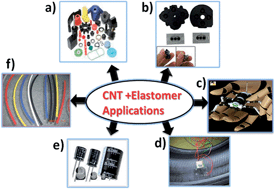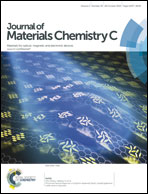Carbon nanotube based elastomer composites – an approach towards multifunctional materials
Abstract
The current study focuses on giving a basic understanding of tubular graphene sheets or carbon nanotubes (CNTs) and points towards their role in fabricating elastomer composites. Since the properties and the performance of CNT reinforced elastomer composites predominantly depend on the rate of dispersion of fillers in the matrix, the physical and chemical interaction of polymer chains with the nanotubes, crosslinking chemistry of rubbers and the orientation of the tubes within the matrix, here, a thorough study of these topics is carried out. For this, various techniques of composite manufacturing such as pulverization, heterocoagulation, freeze drying, etc. are discussed by emphasizing the dispersion and alignment of CNTs in elastomers. The importance of the functionalization technique as well as the confinement effect of nanotubes in elastomer media is derived. In a word, this article is aimed exclusively at addressing the prevailing problems related to the CNT dispersion in various rubber matrices, the solutions to produce advanced high-performance elastomeric composites and various fields of applications of such composites, especially electronics. Special attention has also been given to the non-linear viscoelasticity effects of elastomers such as the Payne effect, Mullin's effect and hysteresis in regulating the composite properties. Moreover, the current challenges and opportunities for efficiently translating the extraordinary electrical properties of CNTs to rubbery matrices are also dealt with.

- This article is part of the themed collection: 2014 Journal of Materials Chemistry C Hot Articles

 Please wait while we load your content...
Please wait while we load your content...